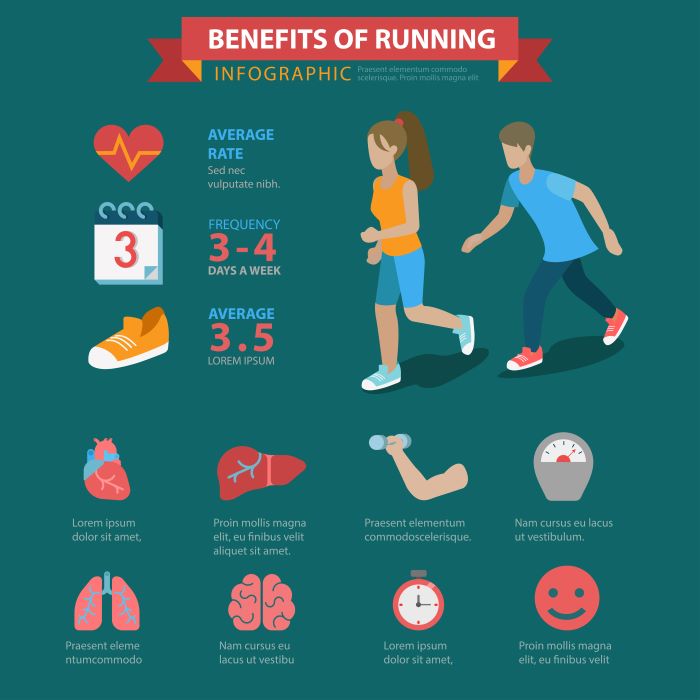Running is more than just a physical activity; it is a pathway to achieving holistic fitness. As you lace up your shoes and hit the pavement, you are not only engaging in an enjoyable sport but also nurturing several essential components of fitness. From cardiovascular endurance to muscular strength, running supports a spectrum of physical and mental health benefits that contribute to overall well-being.
When you run, your heart rate increases, promoting improved cardiovascular health by enhancing blood circulation and oxygen delivery to your muscles. This, in turn, strengthens your heart and lungs, making daily activities easier and more enjoyable. Moreover, the repetitive motion of running builds lower body strength, particularly in the quadriceps, hamstrings, and calves.
Additionally, running is a powerful tool for managing weight and improving metabolic health. As you burn calories during your runs, you also cultivate lean muscle mass, which is essential for maintaining a healthy weight. Beyond the physical, running also boosts mental well-being. The release of endorphins during a run can elevate your mood and alleviate stress, providing a sense of accomplishment and positivity.
With all these benefits, it’s clear that running is a comprehensive workout that touches various facets of fitness. Visit our website to learn more and get started today! Click here.
Cardiovascular Endurance and Its Benefits

Cardiovascular endurance is a critical component of overall fitness that refers to the ability of the heart, lungs, and blood vessels to supply oxygen to the muscles during sustained physical activity. Running is one of the most effective ways to enhance cardiovascular endurance, as it engages multiple muscle groups and elevates the heart rate over extended periods.
When you engage in regular running, your body adapts by improving its efficiency in several key areas:
- Increased Heart Efficiency: With consistent running, your heart becomes stronger and pumps more blood with each beat, reducing the overall heart rate during rest.
- Enhanced Lung Capacity: Running encourages deeper breathing, which increases lung capacity and improves the efficiency of oxygen exchange.
- Improved Blood Flow: Regular running promotes the development of new blood vessels, enhancing circulation and ensuring that oxygen reaches your muscles effectively.
These adaptations lead to numerous benefits, including:
- Improved Stamina: Increased cardiovascular endurance translates into enhanced stamina, allowing you to run longer distances without fatigue.
- Better Recovery: A strong cardiovascular system enables quicker recovery times after intense workouts or races.
- Lower Risk of Chronic Diseases: Consistent running can help reduce the risk of heart disease, hypertension, and other chronic health conditions by promoting a healthy cardiovascular system.
Incorporating running into your fitness routine can significantly boost your cardiovascular endurance, paving the way for a healthier and more active lifestyle.
Muscle Strength and Running Performance

While running is primarily known for its cardiovascular benefits, it also plays a significant role in developing muscle strength. Engaging in this dynamic activity recruits various muscle groups, particularly in the lower body, including the quadriceps, hamstrings, calves, and glutes. Additionally, the core muscles are activated to maintain balance and stability throughout the running motion.
Here are some ways running contributes to muscle strength and overall performance:
- Resistance Training Element: Running, especially on hills or uneven terrain, acts as a form of resistance training. This not only helps in building muscle strength but also enhances power and endurance.
- Muscle Adaptation: Over time, the repeated stress of running causes muscles to adapt and grow stronger. This adaptation process can lead to increased muscle size and strength, contributing to better running performance.
- Improved Functional Strength: Running improves functional strength, which is essential for everyday activities. Stronger muscles contribute to better posture, stability, and overall body mechanics.
Moreover, running can help prevent injuries by strengthening the muscles around joints, particularly the knees and ankles. The increased strength in these areas provides better support during high-impact activities, reducing the likelihood of strains and sprains.
By incorporating strength training exercises into your running routine, you can further enhance muscle development, leading to improved performance and greater endurance on the trails.
Flexibility and Injury Prevention in Runners

Flexibility is a critical component of fitness that often gets overlooked in running. It refers to the range of motion in the joints and the ability of muscles to stretch. Maintaining optimal flexibility can significantly enhance a runner’s performance and play a vital role in injury prevention.
Here’s how flexibility impacts runners:
- Improved Range of Motion: Flexible muscles and joints allow for a greater range of motion during running, which can lead to more efficient and powerful strides. This efficiency translates into better performance, as runners can maintain speed without expending excess energy.
- Reduced Muscle Tension: Flexibility helps to alleviate muscle tension, which can build up during long runs. Lower muscle tension reduces the risk of strains and tears, allowing for smoother and more enjoyable runs.
- Balanced Muscle Development: Runners often focus heavily on specific muscle groups, which can lead to imbalances. Incorporating flexibility training helps develop a well-rounded physique, balancing the strength of opposing muscle groups and further preventing injuries.
To improve flexibility, runners should incorporate dynamic stretching in their warm-up routine and static stretching after runs. Activities such as yoga and Pilates can also enhance flexibility, promoting better overall body mechanics.
By prioritizing flexibility alongside running, athletes can not only enhance their performance but also protect themselves against common running injuries, leading to a more sustainable and enjoyable running journey.
Mental Health Improvements Through Running

Engaging in running does not only benefit the body; it also significantly enhances mental health. The psychological advantages of running are profound and can lead to improved mood and mental clarity. Here are some key ways running contributes to mental well-being:
- Stress Relief: Running serves as a powerful outlet for stress relief. The rhythmic nature of running allows individuals to clear their minds, providing a break from daily pressures and anxieties. The release of endorphins during exercise, often referred to as the ‘runner’s high,’ helps elevate mood and foster a sense of happiness.
- Enhanced Self-Esteem: Regular running can lead to noticeable physical improvements and achievements, such as completing a race or hitting a personal best. These accomplishments boost self-esteem and confidence, fostering a positive self-image.
- Social Connections: Joining a running community or participating in group runs encourages social interaction, reducing feelings of loneliness and isolation. These connections can provide emotional support and motivate runners to stay committed to their fitness goals.
- Cognitive Benefits: Running has been shown to enhance cognitive function and creativity. Regular physical activity promotes better blood flow to the brain, which can improve focus, memory, and overall brain health.
To maximize the mental health benefits of running, it is essential to establish a routine that fits personal preferences and schedules. Whether it’s a brisk run in nature or a quick jog on the treadmill, finding joy in the activity is key to reaping its mental benefits.
Building a Balanced Fitness Routine with Running
Incorporating running into your fitness regimen is a fantastic way to enhance overall health, but to achieve a truly balanced fitness routine, it’s essential to combine running with other forms of exercise. Here’s how to create a well-rounded approach:
- Strength Training: Complement your running sessions with strength training exercises. This not only improves overall muscle tone but also supports running efficiency and reduces the risk of injuries. Aim for at least two days of strength training each week, focusing on major muscle groups.
- Flexibility and Mobility: Incorporating stretching, yoga, or Pilates helps maintain flexibility and mobility, which are crucial for preventing injuries. Regularly stretching tight muscles after runs can lead to improved performance and recovery.
- Cross-Training: Engage in other cardiovascular activities such as cycling, swimming, or hiking. This variety helps prevent burnout and keeps your workout routine exciting. Cross-training also allows different muscle groups to recover while still promoting cardiovascular fitness.
- Rest and Recovery: Don’t forget the importance of rest days! Allowing your body time to recover is vital for muscle repair and overall health. Listen to your body and adjust your training schedule as needed.
By incorporating these components, you can create a balanced fitness routine that leverages the benefits of running while also focusing on strength, flexibility, and recovery.
Visit our website to learn more and get started today! Click here.


